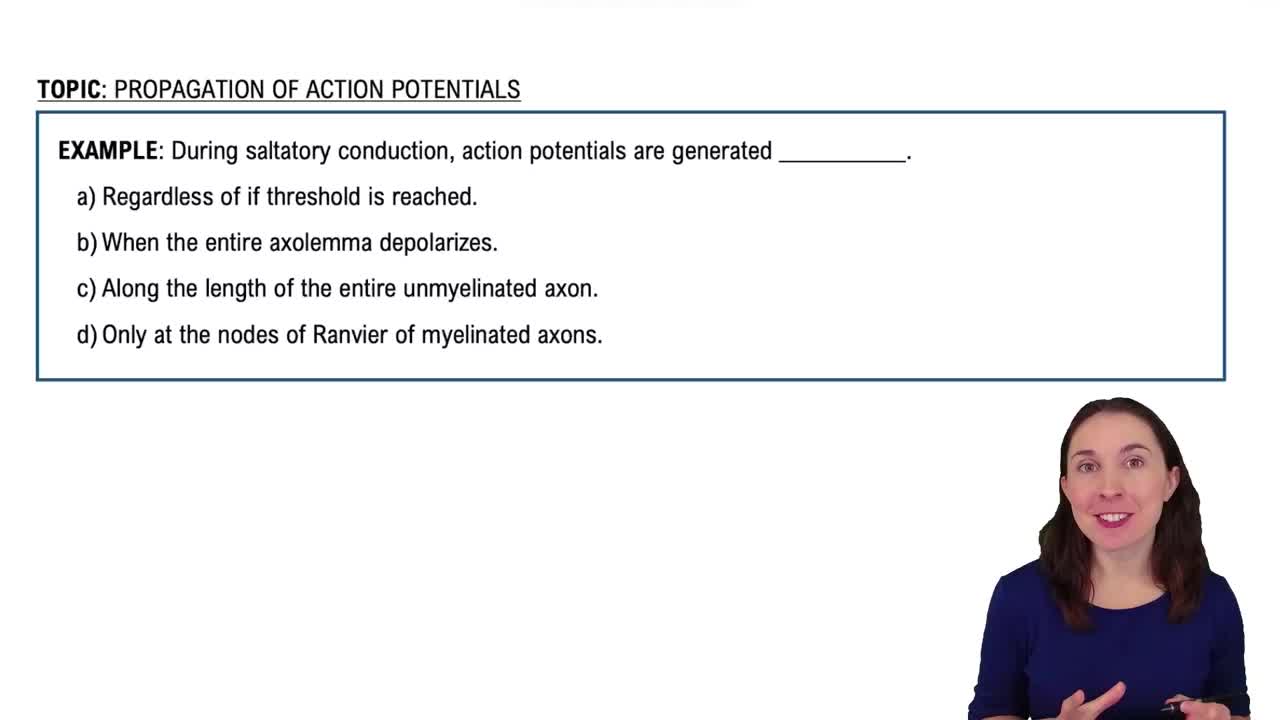Mark the following statements as true or false. If the statement is false, correct it to make it a true statement.
b. The axon contains a high density of ribosomes, rough endoplasmic reticulum, and Golgi apparatus.
 Verified step by step guidance
Verified step by step guidance


Mark the following statements as true or false. If the statement is false, correct it to make it a true statement.
b. The axon contains a high density of ribosomes, rough endoplasmic reticulum, and Golgi apparatus.
Mark the following statements as true or false. If the statement is false, correct it to make it a true statement.
d. Substances can move toward or away from the cell body through the axon via fast axonal transport.
An axon is best defined as a process that:
a. transmits signals only toward the cell body.
b. can generate action potentials.
c. transmits signals only away from the cell body.
d. cannot generate action potentials
Huntington's disease is characterized by a loss of normal inhibition mediated by the basal nuclei. Predict the symptoms you are likely to see with this disease.
Ms. Norris is brought to the emergency department with injuries to the posterior of her head resulting from a motor vehicle accident. Which lobes of the cerebrum likely sustained injuries? Predict the main signs and symptoms you will see resulting from the injury to these cerebral lobes.
Mark the following statements about the spinal cord as true or false. If a statement is false, correct it to make a true statement.
a. The spinal cord functions as a relay and processing station.